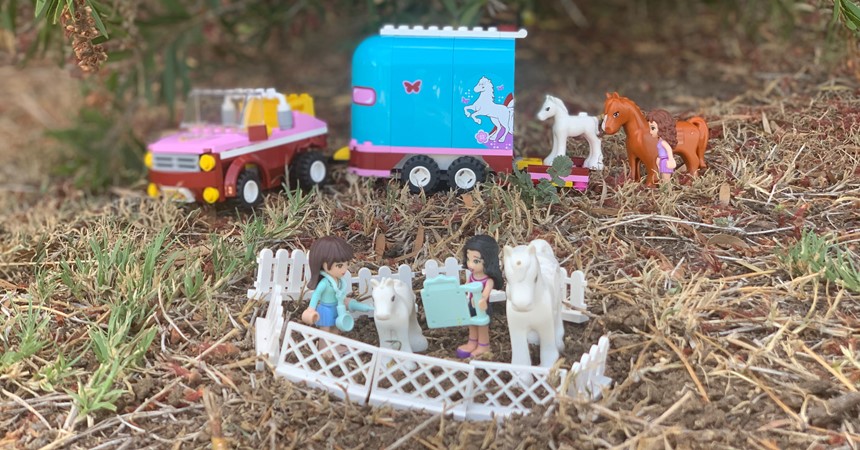St Catherine’s Year 9 and 10 Agriculture students recently entered the National Ag Day Careers Competition, which encourages students from Years 5 to 12 to envision their own career in agriculture, create a LEGO figurine and write a day-in-the-life profile.
Hallee’s chosen career was a horse stud veterinarian and it was with much excitement and pride the college announced she had won the competition for the Years 7 to 10 age category, taking home $500 for first prize.
Hallee’s written profile follows:
Everyday a Horse Stud Veterinarian ensures the health and wellbeing of not only foals and their mothers is at the correct levels. This is from suiting the mare and stallion for safety during coverage to checking over foals and mares after birth.
Before the mare is covered by the stallion both are suited with special soft padded protection equipment. For the mare this is padded horse shoes in case she kicks out onto the stallion. During covering the mare is restrained in one of two ways which both release endorphins to calm the mare. After impregnation, the mare is watched carefully for any signs of disease or infection of herself or her foal. She is checked by the vet roughly two days after coverage to see if she has ovulated, has any fluid around the uterus, her vaginal seal is checked, ultrasounds are carried out and a manual inspection where the vet will wear an arm length glove and feel inside the mare from behind.
During birth and after birth is where a horse stud vet does most of their work. Horse stud vet’s like to let the birth of foals go as natural as possible. Although when a mare is having difficulty giving birth they step in and provide her with all the help she needs to give birth to her new foal trying their best to keep the health, safety and wellbeing of the foal, mare, themselves and any other helping hands at the best levels they can. After the birth of the foal the vet will watch to make sure he/she moves and then let the foal take its first breaths into the world. They also check that roughly half an hour after the foal is born, he/she stands and take its first steps.
Every morning the vet, possibly along with other staff, will check all new foals. During this check they will look over the foal to see if there are any signs of infection, make sure they are nursing and make sure the legs and umbilicus is ok. A blood sample is also taken to ensure the foal is getting enough antibodies from its mother’s colostrum so they can fight diseases. After 36 hours of being born the vet is happy that he/she is healthy.
